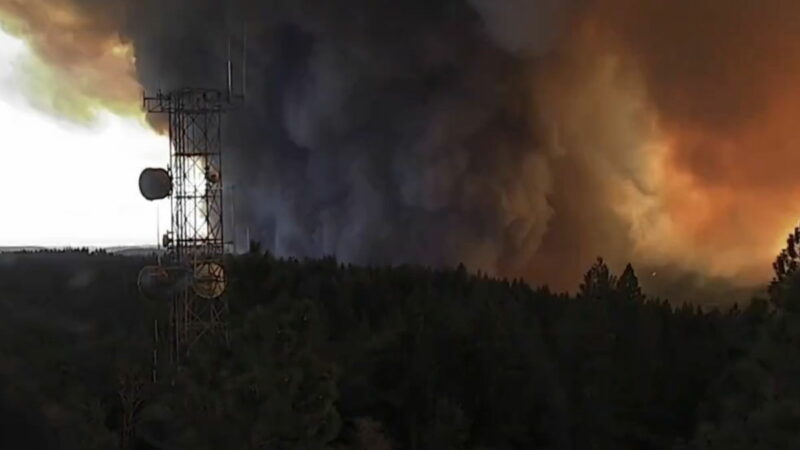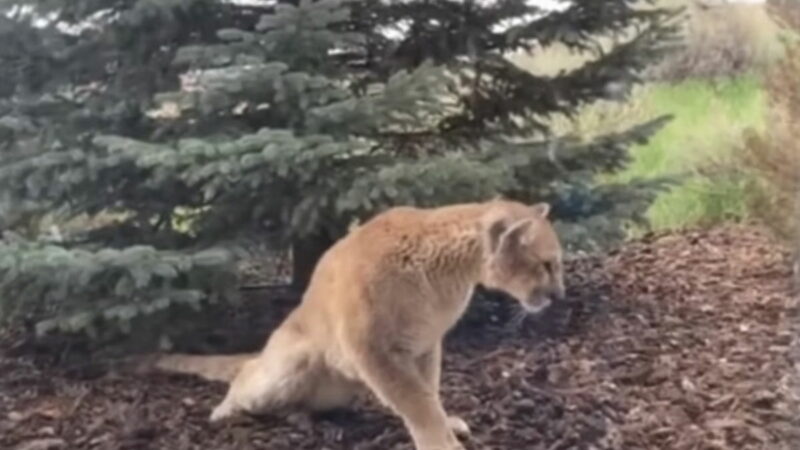The Biggest Mistakes Beginner Hikers Make (And How to Avoid Them)
We all have to start somewhere, even when it comes to hiking. Hiking is one of the easiest outdoor sports to break into. With a low cost of gear and the ability for it to be a solo sport, this is where most people discover their love for the outdoors for the first time.
Videos by Outdoors
Hiking was my first love in the outdoors, and as a backcountry guide and outdoor educator, I can look back and see the evolution of my knowledge on the trail over the years. Now that I guide people on their first backpacking trips and day hikes, there are a few mistakes I see often from beginner hikers, and some questions I get more than others from people who don’t quite know where to start.
Here are the biggest mistakes I see from beginners and how to avoid them, so you can be a safer hiker and get on the trail as often as you’d like.
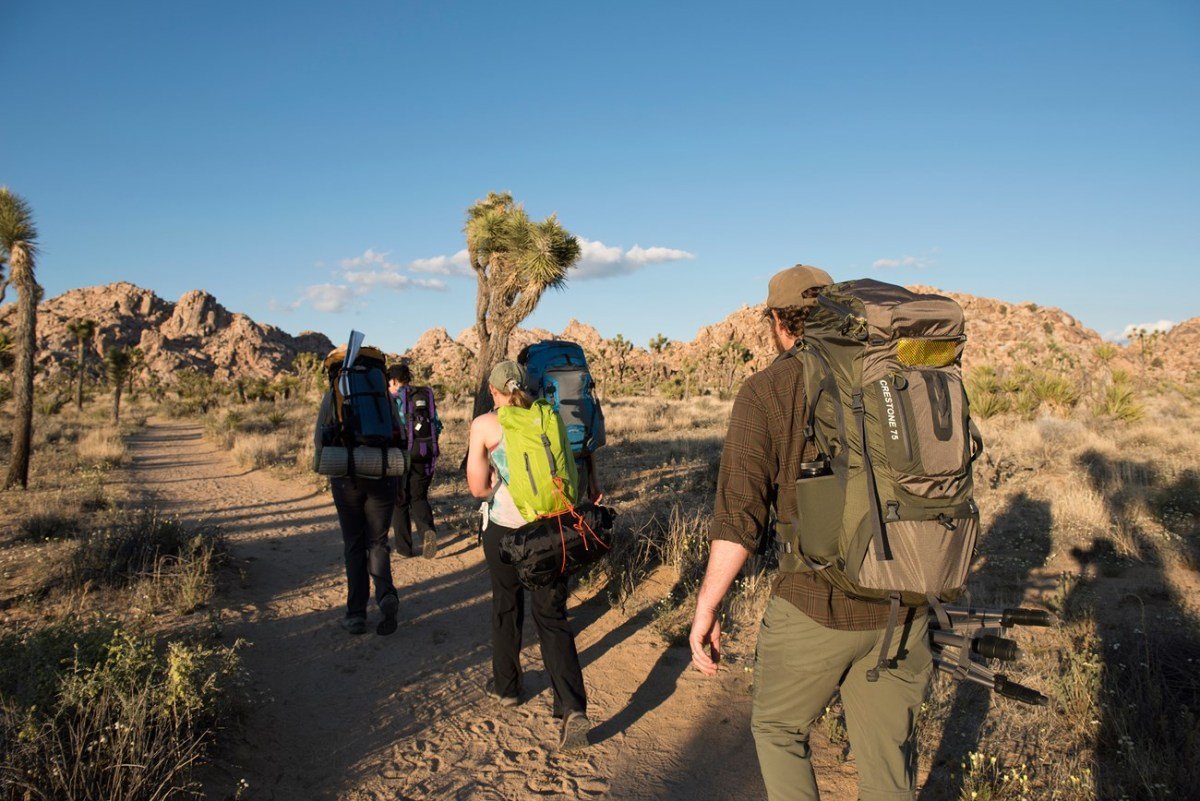
While I’m a firm believer that you don’t need fancy gear to get on trail, one of the biggest mistakes I see from beginner hikers is that they’re hiking in the wrong footwear. Regular running shoes are great, but once you start to hike in terrain that’s wet, steep, has loose rock, or has snow, it’s a good idea to have shoes with more traction. Traction is what will keep you from sliding while hiking on a hill, and this is important to keeping you safe. Some trails have steep drop offs, some are wet from weather or nearby water sources, and some simply have loose rock or scree. These things can be dangerous, and a simple swap of your footwear can prevent injury on trail.
My first real hiking shoes were boots, but I’ve recently fallen in love with trail runners, because I like a lightweight shoe when I’m hiking longer distances. Go to your local outfitter and try on some different options to see what feels the most comfortable to you. There are also a lot of amazing options for used shoes if you need to save money—see if your community has a used gear shop you can check out.
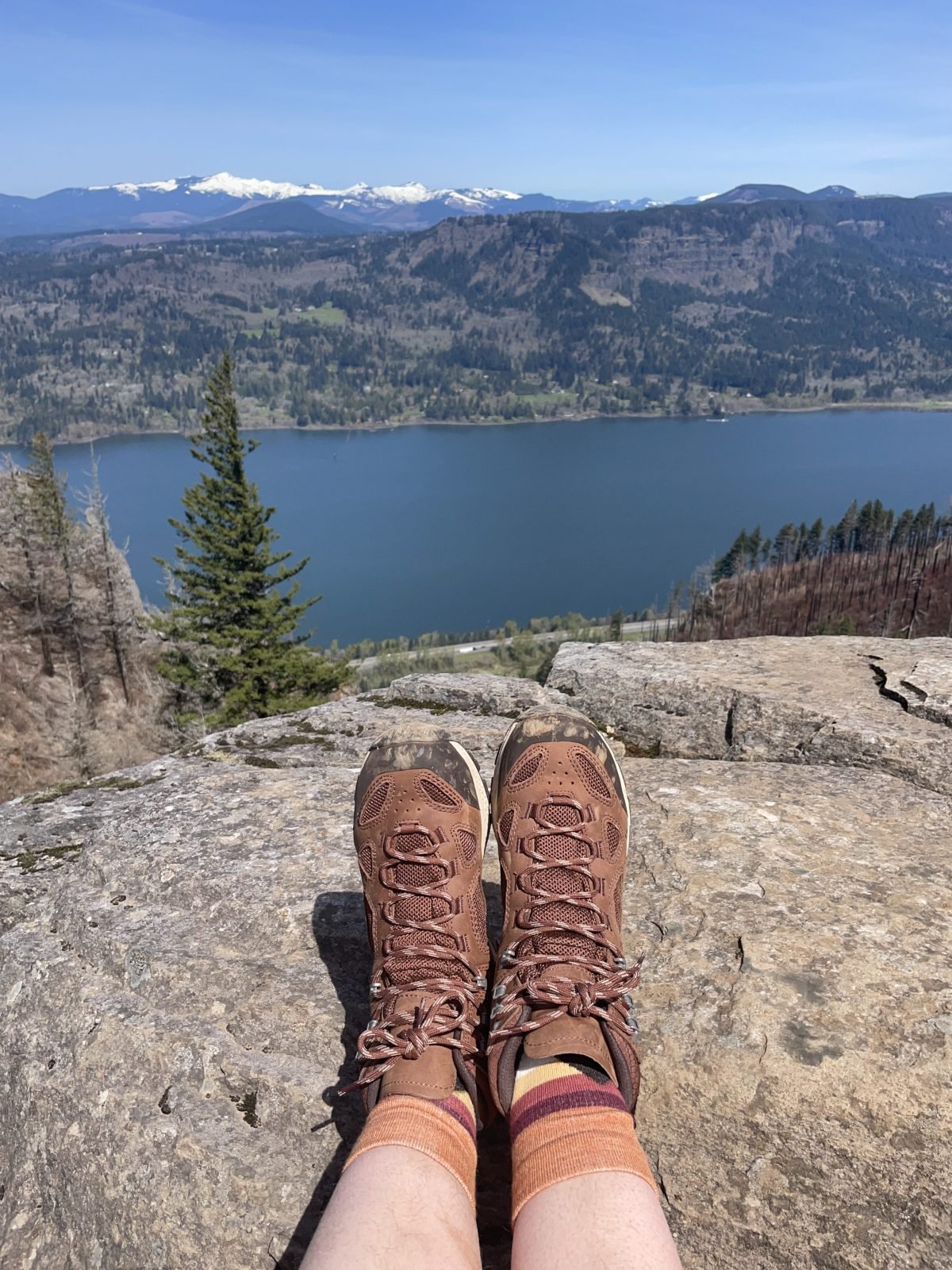
Hiking Mistake: Not Bringing Enough Water
I get it, figuring out how much water to bring on a hike can be hard if you haven’t done a lot of hiking, but one of the biggest mistakes I see on the trail, and one of the topics we talk about in wilderness medicine quite a bit, is dehydration. It’s a good idea to pack at least one liter of water for every 10 miles you’ll be hiking, when it’s not hot outside.
If you’re not sure how much water you drink on trail, bring a liter and a half for every 10 miles. Generally, for a 15-mile hike, I’ll bring three liters of water. Even if I don’t drink all of it, I’d rather be carrying more weight in my pack than skimp on water. A good rule of thumb is that when you reach the halfway point in your water, you should turn around. A safe return to your car is always more important than reaching the summit.
I also always carry electrolyte powder with me in my pack and a first aid kit—you never know when you’ll need that extra boost. This is especially true in the summer or when desert hiking.
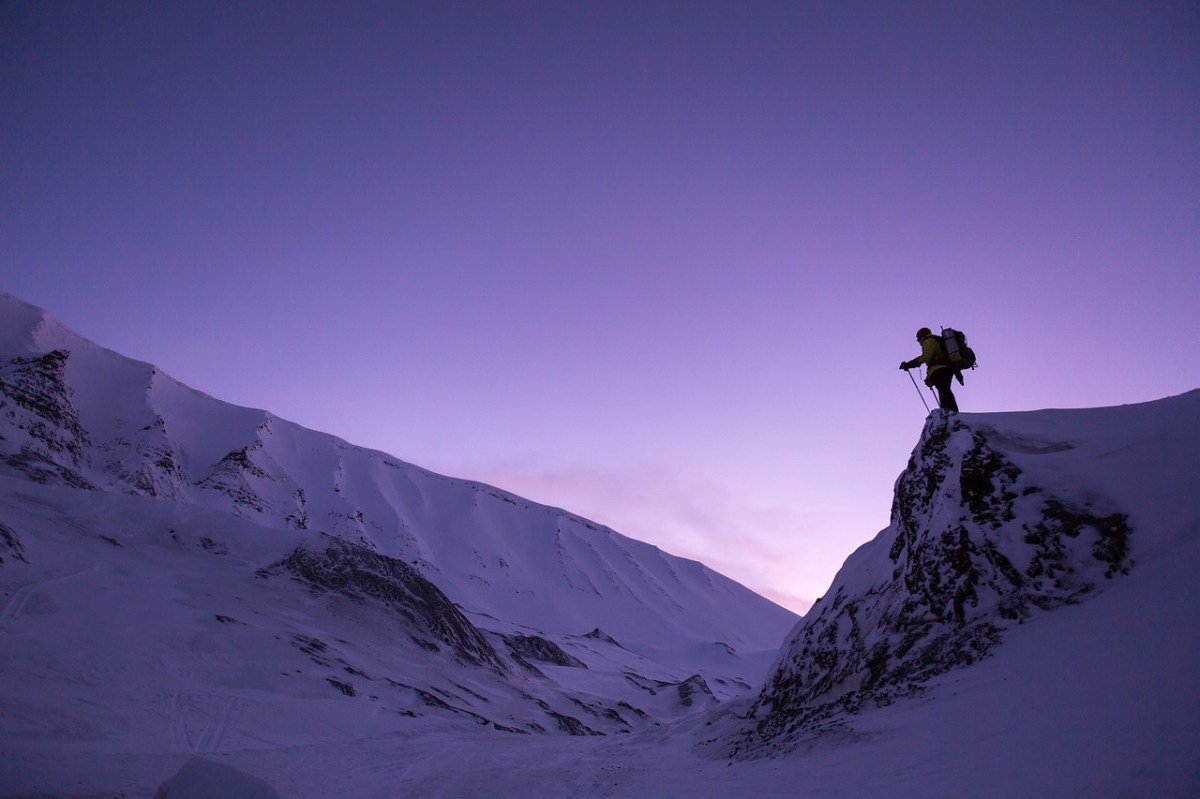
Hiking Mistake: Not Considering the Weather
Something that I see beginners miss when planning a hike is the weather. Don’t get me wrong, I’ve made plenty of weather mistakes too. The things you need to be aware of are extreme heat and extreme cold. Extreme heat goes hand in hand with bringing enough water—I’ve seen too many people start a hike in the heat of the day with only half a liter of water in hand and minimal sun protection. If you’re summer hiking, it’s a good idea to start your hike as early as possible to avoid the hottest temperatures.
This leads me to extreme cold and wet weather. Another reason to start your hikes early, even in the summer, is to avoid storms. In some locations, like Colorado, afternoon storms hit the mountains daily, and the last thing you want is to get stuck outside in rain and lightning. Extreme cold can be a danger, no matter the time of year. Make sure you know how to layer if it’s looking like cold temperatures, and always pack a waterproof layer just in case.
Along with the weather, pay attention to trail conditions. Sometimes, trails hold onto water or snow even after a rain or snowstorm. It’s important to know the types of conditions you might run into. For example, if you’re hiking in the Pacific Northwest, the trail might be wet or muddy, even if it hasn’t rained in a few days. At high elevations, there might be leftover snow, which can make ridges dangerous (like the Devil’s Backbone route up Mount San Antonio in California). Make sure you have proper footwear and check resources and apps like AllTrails and Peakbagger for updated trail conditions.
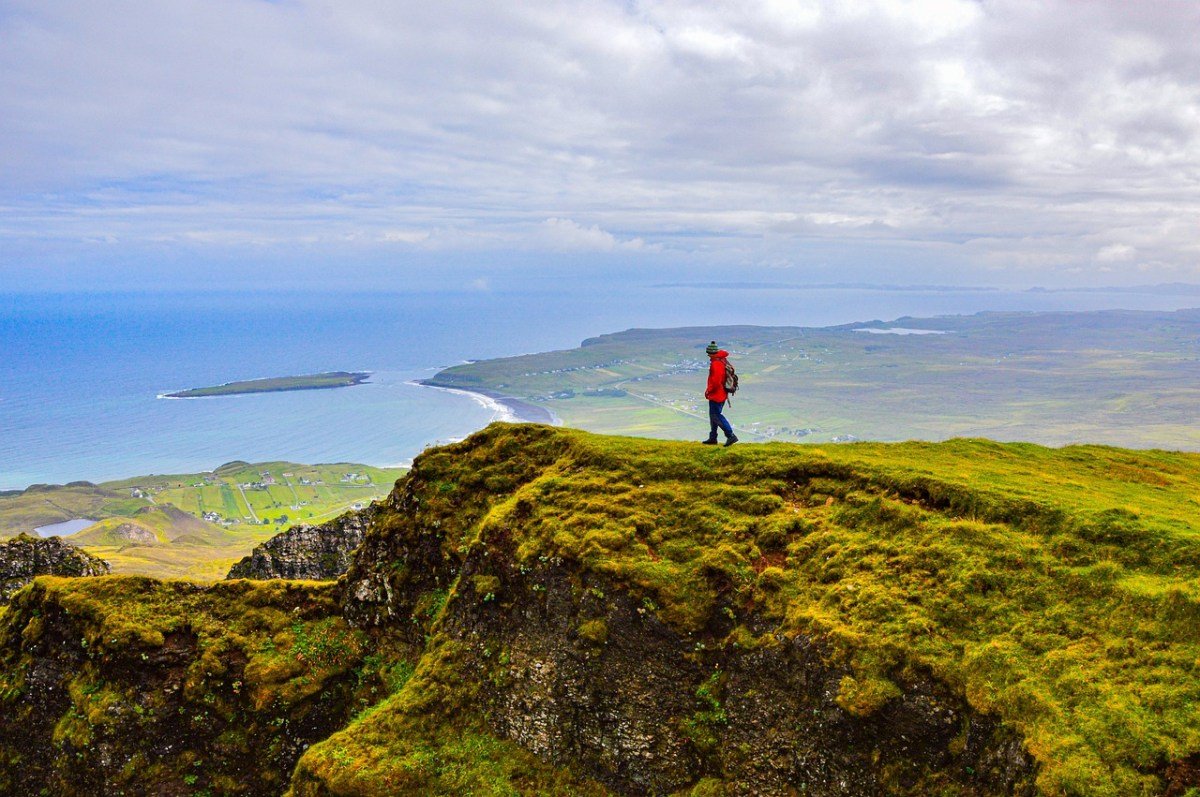
Hiking Mistake: Not Understanding the Trail You’re Hiking
One of the most crucial mistakes I see beginners make is that they don’t quite realize what they’re getting themselves into. It’s important to have a full understanding of specs like distance, type of trail, and elevation gain.
An out-and-back trail is a trail whose full distance is measured as the hike to your destination and the hike back. A loop is exactly what it sounds like—you’ll be hiking in a circle, meaning the entire distance is the length of that loop. A lesser-known term is a lollipop—a trail that combines a loop with an out and back. Usually, this looks like a trail that leads to a connecting loop trail. A point-to-point trail is a trail whose distance is measured one way. If you see this and you plan on leaving your vehicle in one location, rather than using two vehicles to set a shuttle for yourself, know that you will have to double the posted distance of the trail to make it back to your car.
Elevation gain is another concept that can be hard to visualize. A general rule of thumb for me as someone who hikes a lot of mountains is: anything that’s approximately 1,000 feet per mile is going to be steep. But simply looking at the numbers doesn’t tell you everything. Sometimes, all of that elevation is in one really steep section of the trail. For this reason, I recommend learning how to read a topographic map, which will give you a visual of how steep the trail is at what point.
Start with the Basics
Anyone can learn to be a safe hiker, but it’s important to make sure you have a good baseline of knowledge when you’re just starting out. This will help you stay as safe as possible. The more you hike, the more knowledge you’ll gain. And, remember, everyone has to start with the basics at first. Before you know it, you’ll be getting on the trail more confident than ever.




